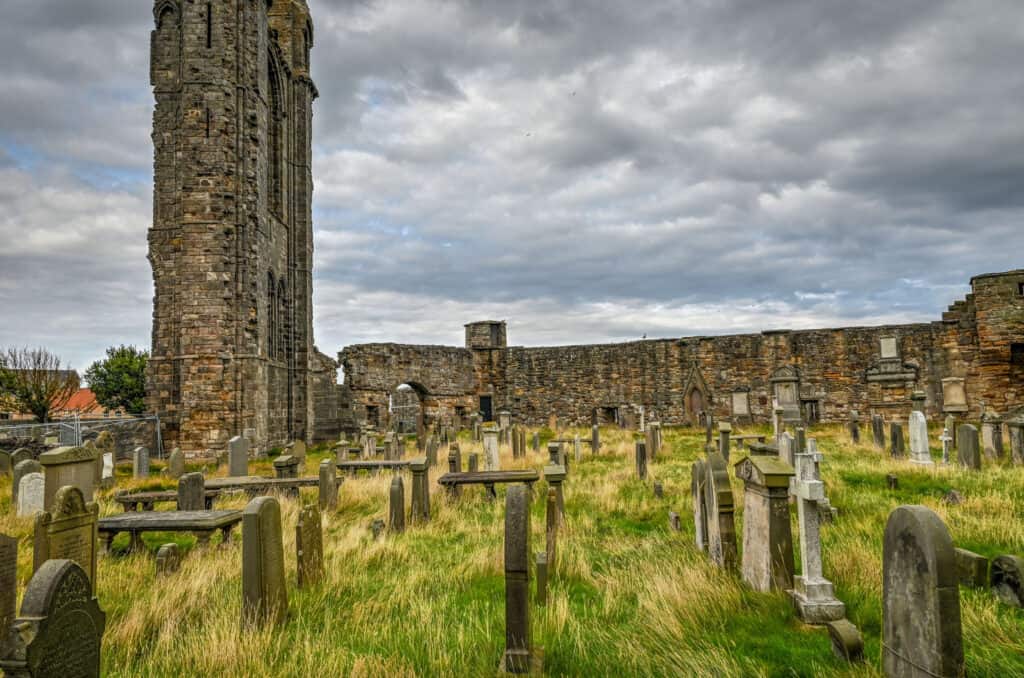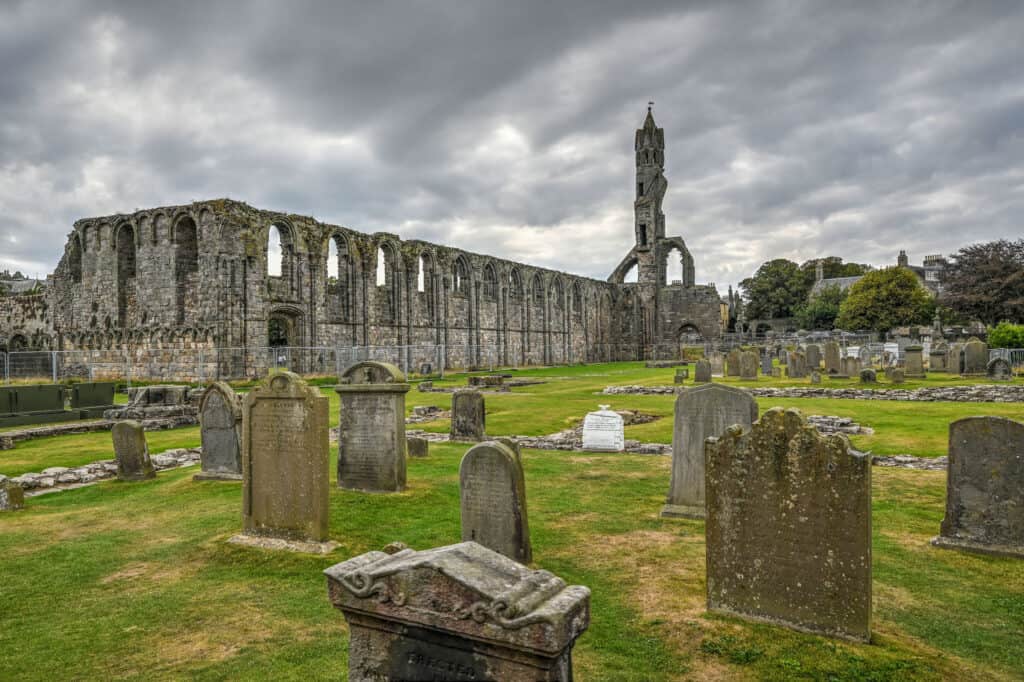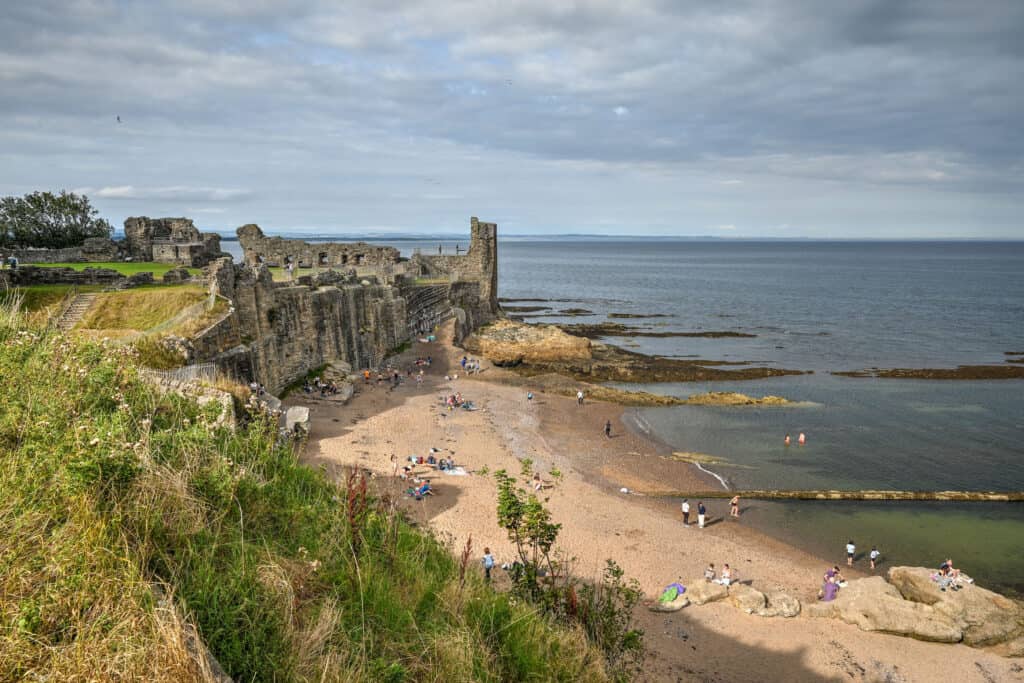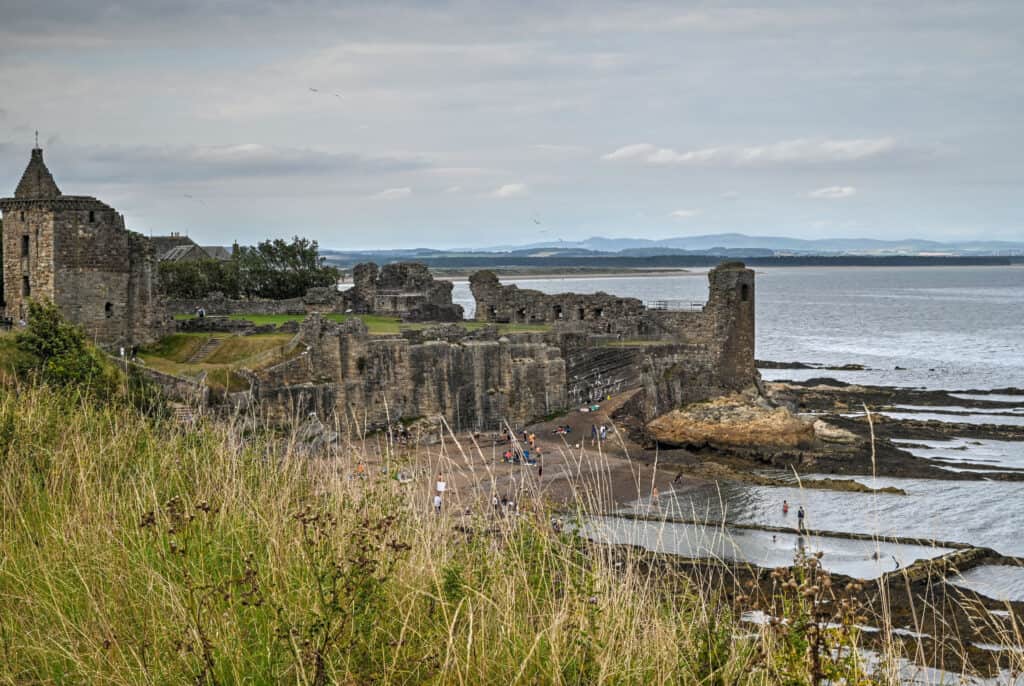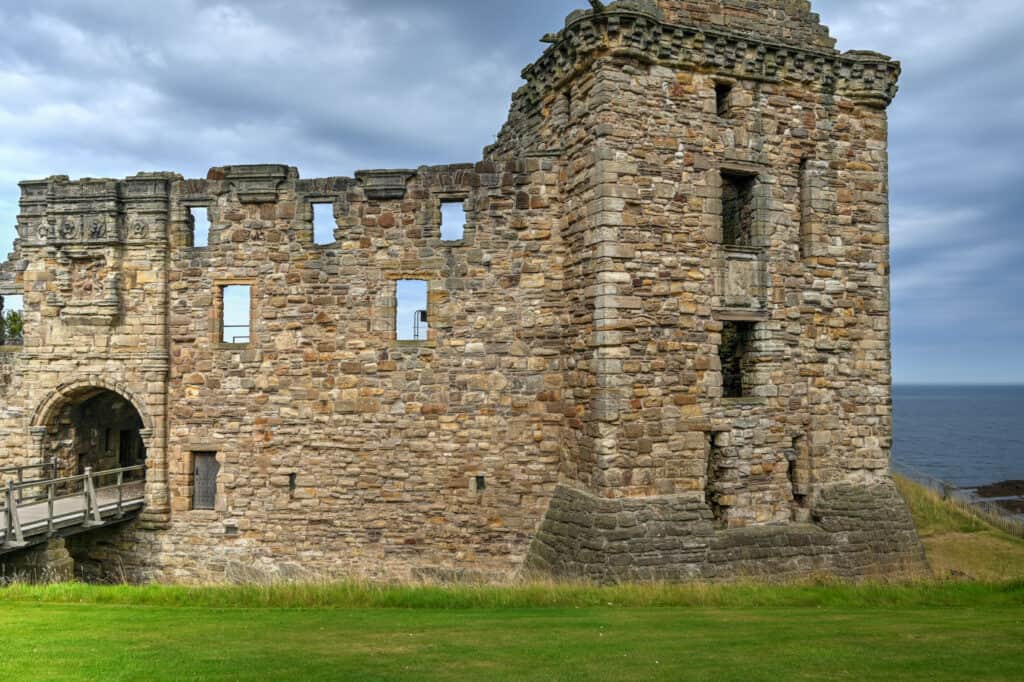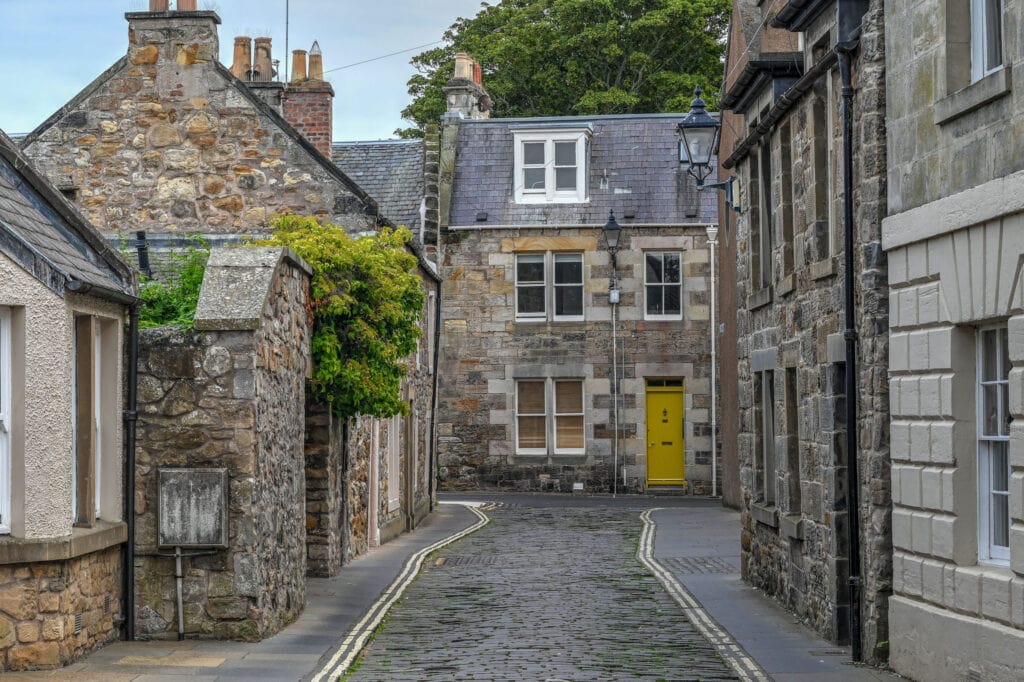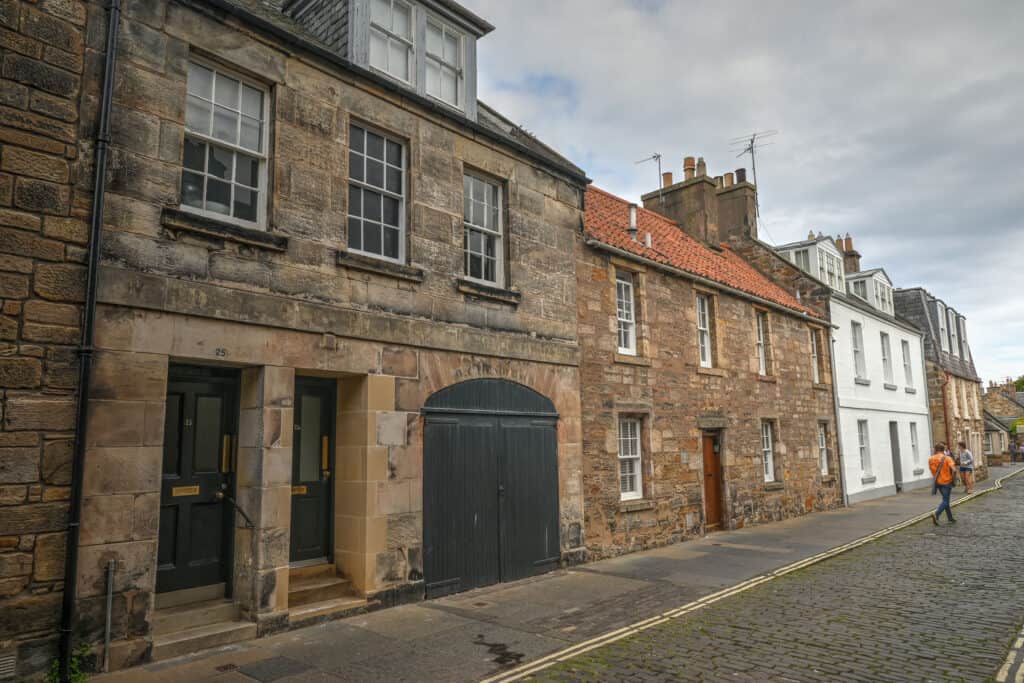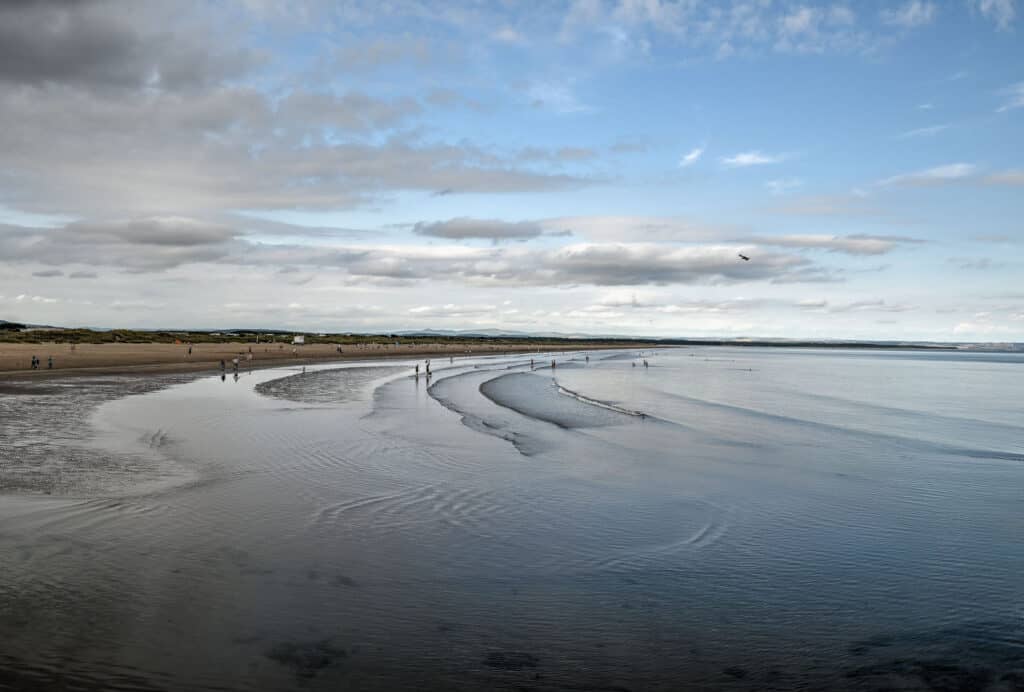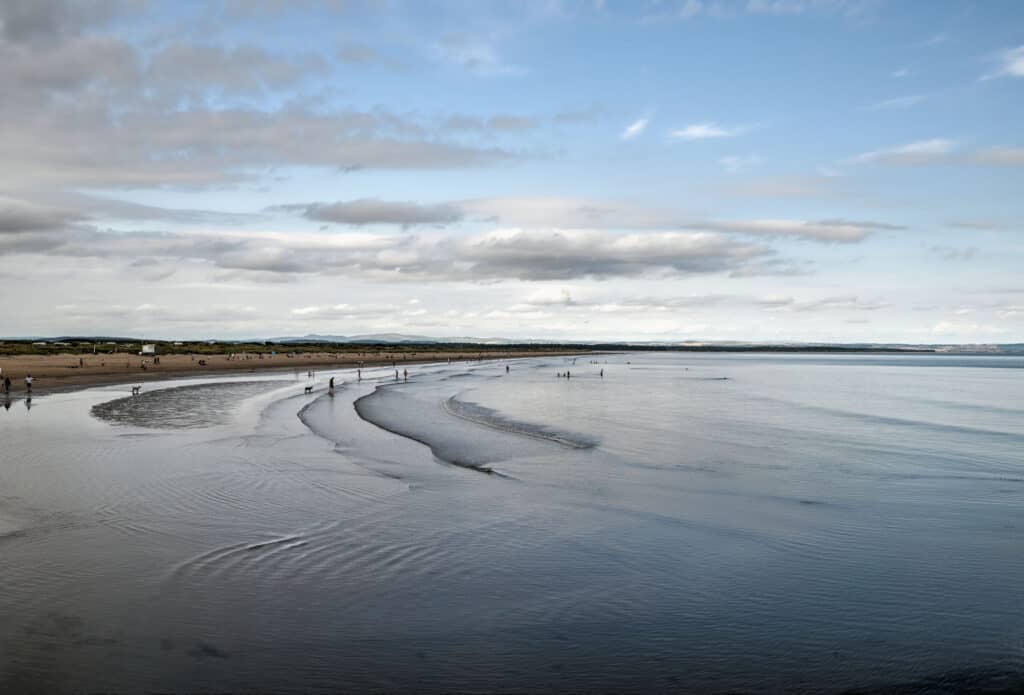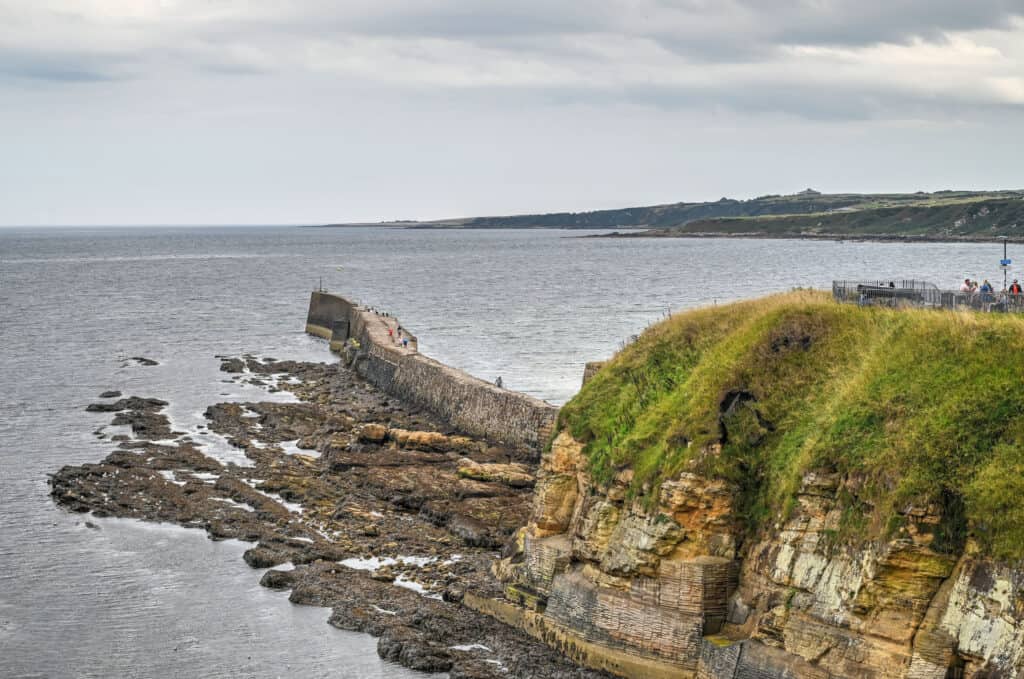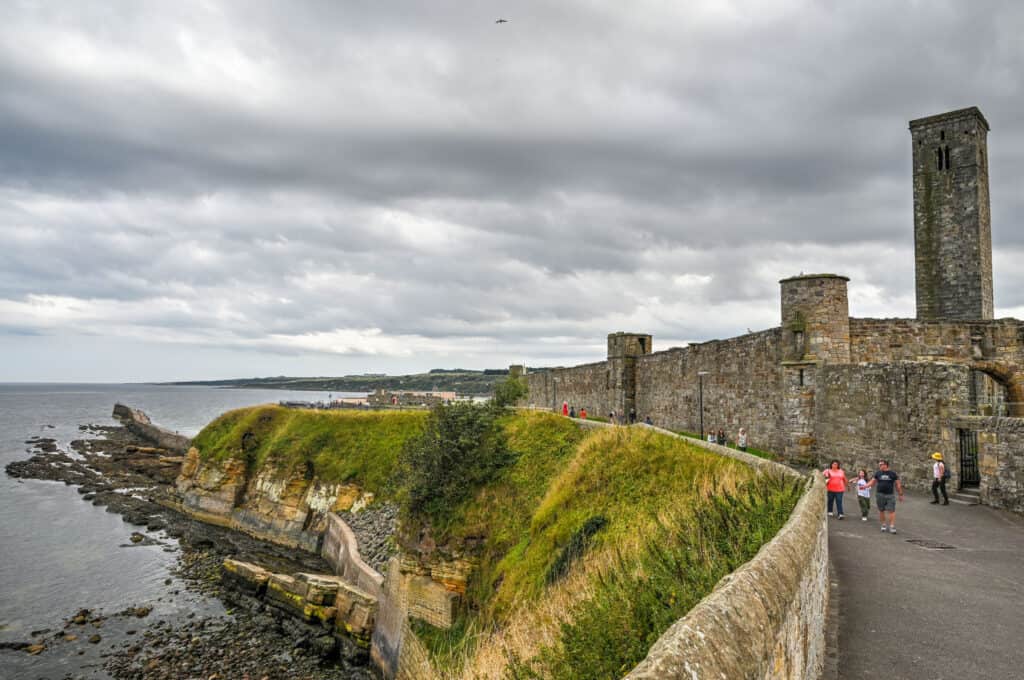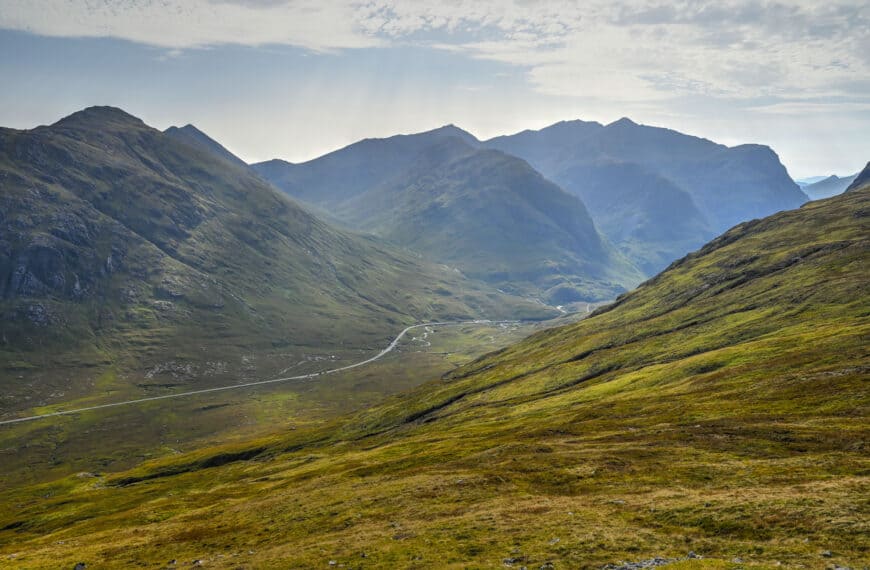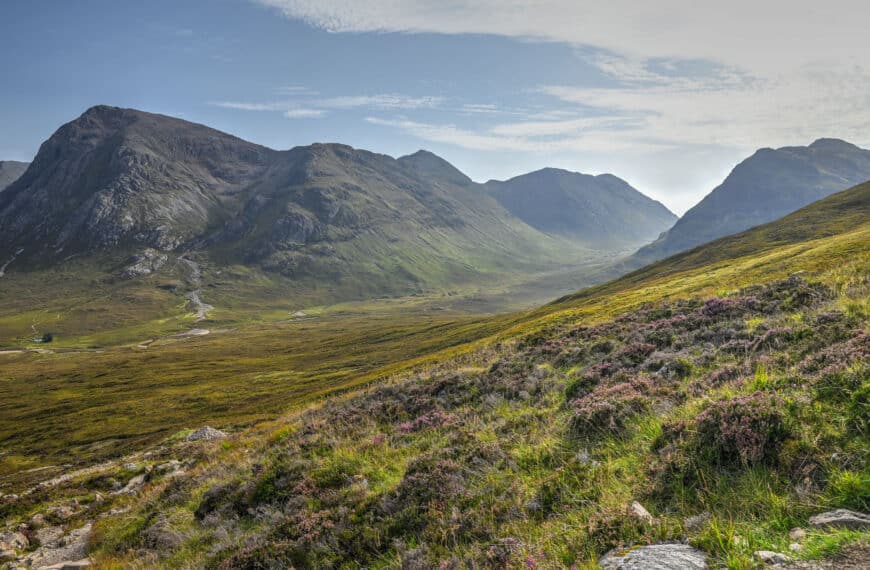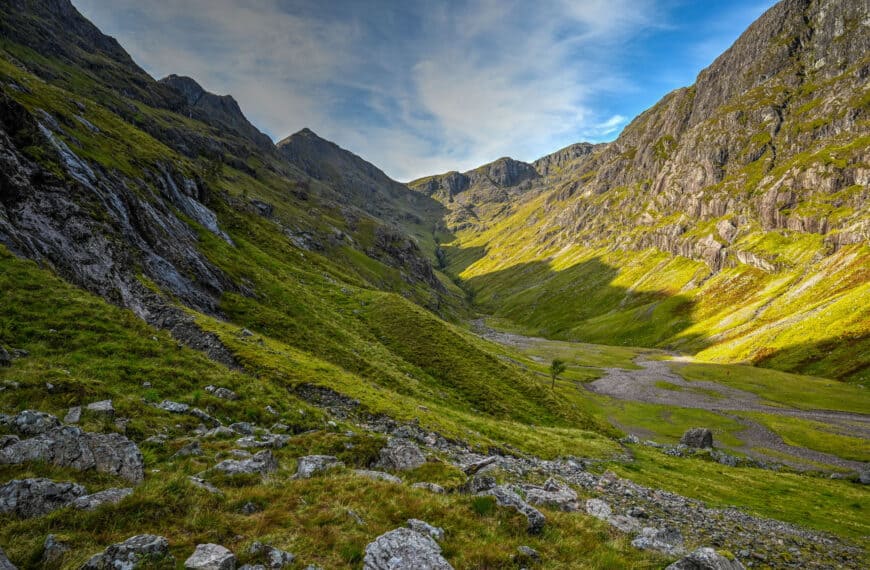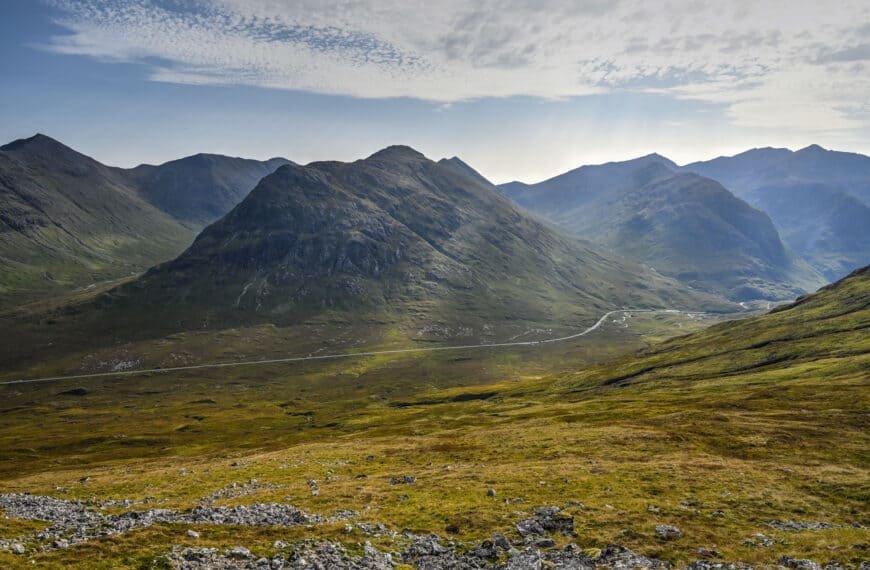Though for many St Andrews is synonymous with golf, the charming seaside town of
St Andrews, northeast of Edinburgh, has much more to offer visitors, including a rich and diverse history, an enchanting historic center with impressive architecture and an idyllic coastline with beautiful sandy beaches. The cathedral and castle ruins are fascinating to visit, both because of the actual sites themselves and also because of their stunning locations along the coastline. The University of St Andrews University is the third oldest one in the English-speaking world (after only Cambridge and Oxford), and on Sundays, anyone can walk on the famous Old Course. The historic town center is just a joy to stroll through. Below we present our Guide to the Best Things to See and Do in St Andrews, to help you get the most out of your time in this charming seaside town, a short hop northeast of Edinburgh.
Disclosure: This page (Best Things to See and Do in St Andrews) may contain product affiliate links. At no additional cost to you, we may receive a commission for purchases made through these links. More details can be found on our disclosure and policies page.
You might also be interested in these pages:
Best Day Trips From Edinburgh
Best Things to See and Do in Edinburgh
Best Stops and Attractions Between Skye and Glasgow
Best Things to See and Do in St Andrews





Orientation – How to Get to St Andrews
St Andrews is a town on the east coast of Fife in Scotland, 10 miles (16 kilometres) southeast of Dundee. St Andrews has a recorded population of just over 18,000, making it Fife’s fourth-largest settlement and 45th most populous settlement in Scotland.

By Car: St Andrews is located 84 km from Edinburgh, about a 90-minute drive away, and is located 120 km from Glasgow, about a 1h45 drive away
For advice and tips on how to drive in Scotland, check out our Scotland Roadtrip Driving Guide.
If you haven’t booked your rental vehicle yet, we highly recommend using Discover Cars to get the best rates on your rental in Scotland.
Parking in St Andrews: The best spot for parking is within a short walking distance to town, located in between the beach and The R&A World Golf Museum. The parking lot is pay-and-display and costs up to £3.80 for a full day.
By Public Transit: St Andrews can also be reached by a combination of train and bus from Edinburgh (there is no train station in St Andrews) and takes roughly the same amount of time as driving from Edinburgh, depending on the traffic conditions. There is a direct bus connection (X59), but the route takes close to 2 hours. From Glasgow, using public transit to get to St Andrews is much slower and most options take upwards of 3 hours.
By Group Tour: Another great way to visit St Andrews from Edinburgh is to join one of several great organized group tours that are available.
St Andrews Facts and History
- The town is home to the University of St Andrews, founded in 1413, the third oldest university in the English-speaking world and the oldest in Scotland.
- St Andrews is also known globally as the “home of golf”. This is in part because of The Royal and Ancient Golf Club of St Andrews, founded in 1754, which until 2004 exercised legislative authority over the game worldwide (except in the United States and Mexico). Also, the Old Course of St Andrews Links (acquired by the town in 1894) is the most frequent venue for The Open Championship, the oldest of golf’s four major championships.
- St Andrews was established around 1140, possibly on the site of the ruined St Andrews Castle. St Andrews, in particular the large cathedral built in 1160, was the most important centre of pilgrimage in medieval Scotland and one of the most important in Europe. Pilgrims from all over Scotland came in large numbers hoping to be blessed, and in many cases to be cured, at the shrine of Saint Andrew.
- In 1559, the town fell into decay after the violent Scottish Reformation and the Wars of the Three Kingdoms losing the status of ecclesiastical capital of Scotland. Even the University of St Andrews considered relocating to Perth in the late 17th century.
- In the 18th century, although the town was still in decline, St Andrews was becoming known for having golf courses well known to golfers. By the 19th century, the town had finally begun to expand beyond the original medieval boundaries with streets of new houses and town villas being built.
Getting Around St Andrews
St Andrews is a small town that can easily be explored on foot. Without stopping, you could walk around the historical portion of the town and see all of the sites listed below in under an hour.
If you don’t want to plan your own walking itinerary and would like to know more about the town’s history, there are several great guided walking tours of St Andrews:
How Much Time Do You Need in St Andrews
You should plan to spend at least half a day in St Andrews in order to take in all the sights without feeling too rushed. There’s also plenty to do if you decide to spend a full day here (or even longer). Time will go by quickly when you explore all the cobbled streets and alleyways that crisscross the historic town center. Besides the main historical attractions, you can spend hours lounging on the beach in good weather, visit the town aquarium, or wander through the town’s botanical gardens.
Best Things to See and Do in St Andrews
For such a small town, St Andrews sure packs a lot of interesting and historical sites, with the oldest and perhaps most fascinating site being the cathedral.
Visit the St Andrews Cathedral
Although today the Cathedral mostly consists of ruins, the site is still quite fascinating to visit. The remnants of the cathedral and the adjacent graveyard are fun to explore. Take your time here to try and imagine how tall the cathedral might have stood back in the day and to admire the nearby coastal scenery.
Completed in 1318, St Andrews Cathedral became the centre of the Medieval Catholic Church in Scotland as the seat of the Archdiocese of St Andrews and the Bishops and Archbishops of St Andrews.
The cathedral fell into disuse and ruin after Catholic mass was outlawed during the 16th-century Scottish Reformation. In June 1559, a Protestant mob incited by the preaching of John Knox ransacked the cathedral; the interior of the building was destroyed. The cathedral fell into decline following the attack and became a source of building material for the town. By 1561 it had been abandoned and left to fall into ruin. The remaining structures indicate that the building was approximately 119 m (390 ft) long, and is the largest church to have been built in Scotland.





Surprisingly, the tallest structure at the site is St Rule’s Tower (100 feet), which although is on cathedral grounds, actually predates it by at least 100 years. St Rule’s Church was originally built in the early 11th century and underwent a significant expansion not long after it was finished. But it didn’t take long after that the church was insufficient to meet the needs and ambitions of the catholic church, so work began on building what became St Andrews Cathedral, which itself took over 150 years to build.
You can climb to the top of St Rule’s Tower via a tight metal spiral staircase, which leads up to a set of intramural stairs, which themselves lead up to a narrower stone spiral staircase (156 steps in total). Unfortunately, we didn’t get to visit the tower due to ongoing restoration work.
Visiting information
Tickets Prices: Adult £3.75, Cildre £2.25. Family and senior discounts are available.
Facilities: None
Schedule:
29 March to 30 September: daily, 9:30 am to 5:30 pm (last entry 4:45 pm).
1 October to 28 March: daily, 10 am to 4 pm (last entry 3:30 pm).
You can visit this historic building with Scotland’s Explorer Pass
If you plan on visiting multiple Castles and Historic Buildings in Scotland, you might want to consider getting the Explorer Pass from Historic Environment Scotland.
The Explorer Pass costs £35 for adults and £21 for children. You can purchase your Explorer pass online here.
The pass is valid for 14 consecutive days.
The pass includes entry to all Historic Environment Scotland properties, which include Edinburgh Castle, Stirling Castle, Doune Castle, Urquhart Castle, St Andrews Castle, St Andrews Cathedral, Iona Abbey, Melrose Abbey, Fort George, and many more.
Important: To guarantee site entry, you should still pre-book your desired property visits (dates and timeslots).
Exclusions: Explorer passes do not include access to properties in the care of The National Trust for Scotland, The Palace of Holyroodhouse and Holyrood Abbey in Edinburgh, or properties in the care of private trusts.
Very occasionally a property may have to close at short notice due to adverse weather conditions or other reasons such as planned renovations. Please check the Historic Scotland closures page for any unexpected site closures.
Visit the St Andrews Castle
St Andrews Castle is an impressive castle ruin that sits on a rocky promontory overlooking a small beach and the adjoining North Sea, and is another casualty of the Scottish Reformation. The castle served as the main residence of the bishops and archbishops of St Andrews and was first built in the 13th century. In addition to being a Bishop’s palace, the castle has also served as a fortress and a state prison. During the Wars of Scottish Independence, the castle was destroyed and rebuilt several times as it changed hands between the Scots and the English.
In the mid-14th century, it was destroyed by the Scots to prevent the English from once again using it as a stronghold. It stayed in this state until the early 15th century when Bishop Walter Trail rebuilt it – his castle forms the basis of what can be seen today.
During the Scottish Reformation, several violent events led to a siege that resulted in one of the castle’s most remarkable features that can be seen today: tunnels that were dug in 1546 by attackers trying to breach the castle defences and the tunnels dug by castle defenders to intercept the attackers’ tunnel.
Another interesting and creepy feature of the castle is the ‘bottle dungeon’, one of the most infamous castle prisons in medieval Britain, which was a dank and airless pit cut out of solid rock, where prisoners were simply dropped, never to be seen again.
St Andrews Castle was left without a resident or a purpose once bishops were abolished in 1592, and rapidly into ruin. In 1801, the Great Hall collapsed and most of it plunged into the sea. There were further losses, unfortunately, until a sea wall was built in 1886.
Visiting information (updated 2024)
Tickets Prices: Adult £8, Children £6. Family and senior discounts are available.
*You can also visit the castle with the Explorer Pass (described above)
Facilities: Toilets, gift shop and exhibition
Schedule:
29 March to 30 September: daily, 9:30 am to 5:30 pm (last entry 4:45 pm).
1 October to 28 March: daily, 10 am to 4 pm (last entry 3:30 pm).
Walk Along the Old Course on Sunday
At golf clubs around the world, Sunday is often the busiest day of the week. Not so at The Old Course at St. Andrews. In fact, on the vast majority of Sundays, there isn’t a golfer to be found. The course is open to the public and anyone can walk on the course. If you can visit St Andrews on Sunday, this is a really great activity to soak up some golf history and enjoy the town scenery from a different perspective. A popular place to take pictures is near the Swilcan Bridge, which links the 1st and 18th fairways. The bridge was originally built over 700 years ago to help shepherds get livestock across, and today it provides an excellent vantage point from which to admire the historic buildings that backdrop the 18th hole.



The rest of the week the course is closed to the public, but you can still easily admire the course from the nearby streets and watch golfers try their luck on this historic golf course. If you would like to play yourself, be prepared to splurge. The peak green fee (2024) is £320 during the high season from mid-April to mid-October. During the winter season, it falls to a low of £150 from November 1-March 31.
The Old Course at St Andrews is considered by many to be the “home of golf” because the sport was first played on the links at St Andrews in the early 15th century. It was also the home to the very first Open competition back in 1873, and today it hosts the tournament every five years.
Funnily enough, golf was briefly banned in Scotland by James II in 1457 because he felt that young men were playing too much golf instead of practising their archery. The ban was upheld by his son James III, and remained in force until 1502, when James IV became a golfer himself and removed the ban.
If you would like to learn more about the course, there are several excellent walking tours of the course that you can book:
The R&A World Golf Museum
Formerly previously known as the British Golf Museum, the R&A World Golf Museum is located just across the street from the Old Course’s 18th Green and Clubhouse, and near the large public parking lot, the museum displays over 500 years of golfing history in one of the most comprehensive collections seen anywhere in the world. The museum shop sells official merchandise from The Open and other major championships above the museum is The Niblick Restaurant, from which you can enjoy great views of the golf course and the nearby West Sands Beach.
Take a Stroll Through the University of St Andrews Grounds
Founded in 1413, the University of St Andrews is the oldest of the four ancient universities of Scotland and the third-oldest university in the English-speaking world after Oxford and Cambridge. St Andrews has many beautiful buildings, but those around the university campus have some of the most impressive architecture, making it a great place to take a leisurely stroll.





Although the university’s buildings are somewhat scattered around the historic town center (though mostly between North Street and The Scores Street), St Salvator’s Chapel and St Mary’s Quad are two central places of note. St Mary’s Quad is the grassy square that acts as the heart of the University, often a focal point for student gatherings. St Salvatore’s Chapel (pictured above) dates from 1450 and is the town’s most beautiful medieval church and an incredible example of Gothic architecture.
Explore the Town Center
The historic town is centred around Market Street, St Andrews’s most atmospheric and lively street. It’s a lovely cobblestone street that is lined with boutiques, cafés and restaurants. From Market Street, a myriad of side streets and lanes meander to South Street, which has its own share of shops, bars and restaurants. And, on the other side, North Street (home to quiet cafes and university buildings); this street leads to the castle and cathedral.


If looking for a quick bite to eat to nourish you during your sightseeing, you can find two great fish & chips takeaway joints: Tailend and Cromars For those of you with a sweet tooth, head to Jannettas Gelateria, a family-run artisan ice cream that has been in business for over 100 years.
Walk along the West Sand Beach
Right next to the Old Course and made famous for its use in the opening scenes of the Oscar-winning film ‘Chariots Of Fire’, the West Sands Beach is a 2-mile-long stretch of soft golden sand. If you are not inclined to spend time just relaxing on the sand the beach can still be a great place to enjoy a nice relaxing stroll.
If You would prefer a potentially less busy beach, head to the other side of the historic center, near the cathedral towards East Sands Beach and the St Andrews pier.
Other Activities
Visit the Wardlaw Museum
A free and recently renovated museum highlighting medieval artifacts and the oldest known map of St Andrews (from 1580). The Wardlaw Museum also boasts a rooftop terrace from which you can admire the West Sands Beach and the North Sea.
Visit the St Andrews Aquarium
Nestled on St Andrews’ dramatic north-facing cliffs, near the R&A World Gold Museum, the St Andrews Aquarium is a great place to spend some time enjoying aquatic marine life, such as sharks, lionfish, seals, piranhas, seahorses, and even some land-based species including penguins, alligators, reptiles, spiders and meerkats.
Go on a St Andrews Ghost Tour
If you enjoy ghost stories and the paranormal, then this might be the activity for you. St Andrews has a rich history of paranormal events which has led to the creation of what is now recognized as one of the top ghost tours in the world, based on extensive research spanning six decades by author Richard Falconer.
Relax in the St Andrews Botanic Garden
A fifteen-minute walk southwest of the town center will lead you to the St Andrews Botanical Garden. Set over an 18-acre site, the gardens feature glasshouses with desert plants and orchids, water fountains, a tropical butterfly house, rock gardens and flower exhibitions.
Preparing a trip to Edinburgh and the lowlands?
You might be interested in these pages:
Best Day Trips From Edinburgh
Best Things to See and Do in Edinburgh
Best Stops and Attractions Between Skye and Glasgow
Best Things to See and Do in St Andrews
Preparing a trip to Scotland?
You might be interested in these Scotland pages:
10-Day Scotland Roadtrip Itinerary (Edinburgh and Highlands)
Scotland Driving Guide and Tips
7 of the Best Castles to Visit in Scotland
Best Things to See in the Scottish Highlands
Best Hikes to do in the Scottish Highlands
We also highly recommend these guidebooks:
Rick Steves Scotland
Lonely Planet Scotland’s Highlands
Photography Gear
If you like our photography, you might be interested in some of the gear we use to shoot our travel and hiking destinations.
Camera Body – Nikon Z 6ii Fx-series Mirrorless Body
Main Lens – NIKON 24-120mm F/4G ED VR AF-S
Zoom Lens – Sigma 745-306 150-600mm f/5-6.3
Polarizing filters – Urth Circular Polarizing (CPL)
Camera Tripod – K&F Concept 64-inch Camera Tripod
Mini-tripod – Lammcou Flexible Camera Tripod
Camera/hiking backpack – Vanguard Alta Rise 48 Backpack
Universal Travel Adapter – VYLEE Universal International Power Travel Plug
Other Travel Essentials
Travel Insurance
SafetyWing is a travel insurance company that offers comprehensive coverage for travellers. Includes Medical Insurance and Travel Insurance. Primarily geared towards long-term travellers, digital nomads, and expats.
e-Sim cards
Airalo is the world’s first and largest eSIM store with eSIM plans for 200+ countries and regions worldwide. With Airalo eSIMs, travellers can get connected the moment they land at their destination and avoid nasty data roaming charges
eSIMS are a sustainable alternative to single-use SIM cards – they are 100% digital, require less energy to produce and be re-used rather than disposed of.
Car Rentals
Discover Cars is our go-to website for car rentals. We almost always find our preferred rate there.
Transfer from Airport
Welcome Pickups is our favourite private transfer service, which you can pre-book at a fixed price. Currently available in 220 cities all over the world (mostly in Europe, but with several major cities in Asia, the Middle East and the US).
Kiwitaxi is another private transfer service – we haven’t tried it yet, but it’s currently available in a few more countries (102 as of 2024).
Hotels and Accommodations (coming soon)
Photography Prints
If you found this blog useful, you can help support our blog by purchasing low-cost digital prints. Printed physical prints are also available for purchase.








—–
Well, that wraps it up! We hope you enjoyed our Best Things to See and Do in St Andrews Guide and that it will prove useful for planning your trip to the beautiful Scottish Highlands.
—–
You might also be interested in these related pages:

